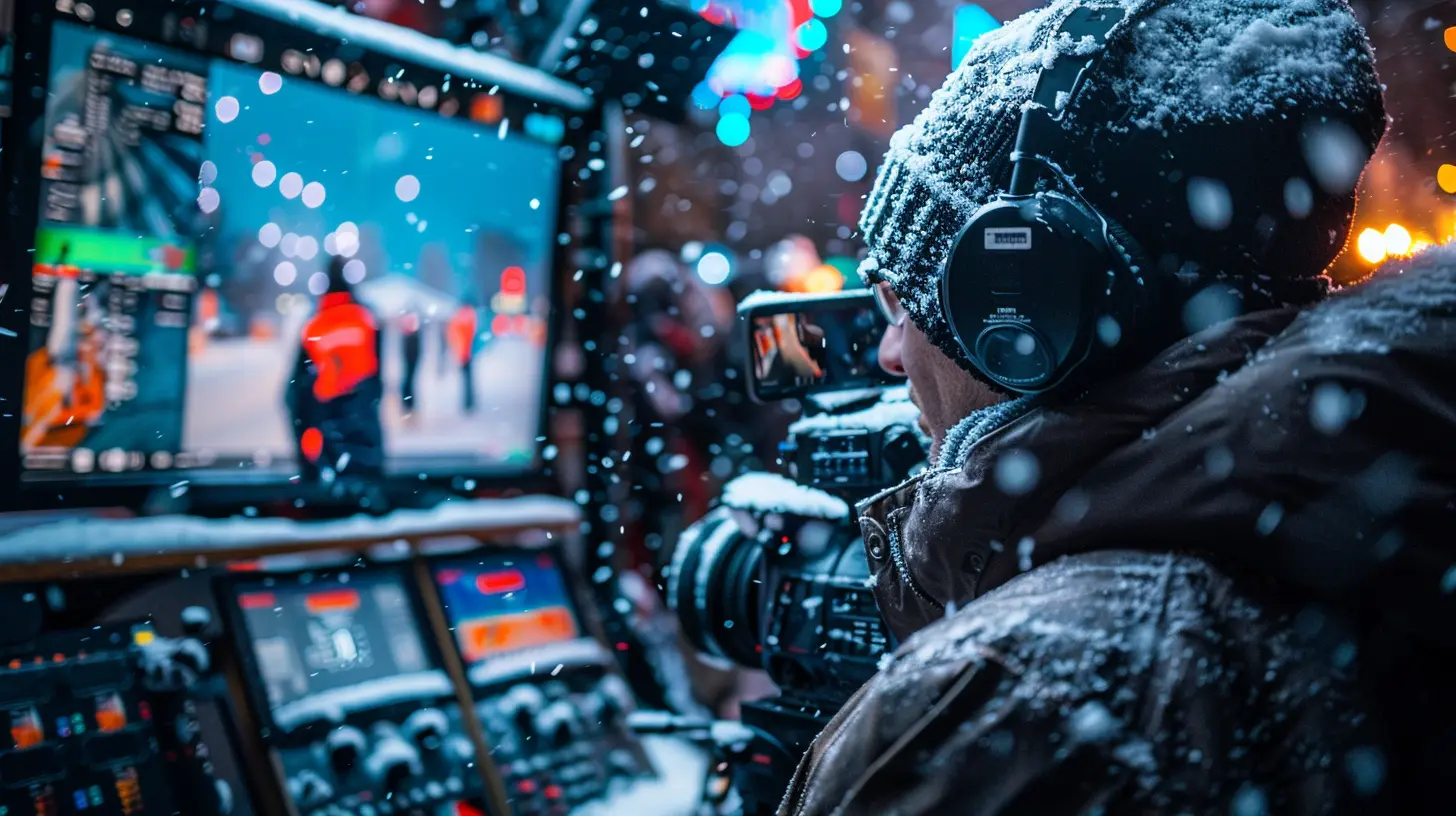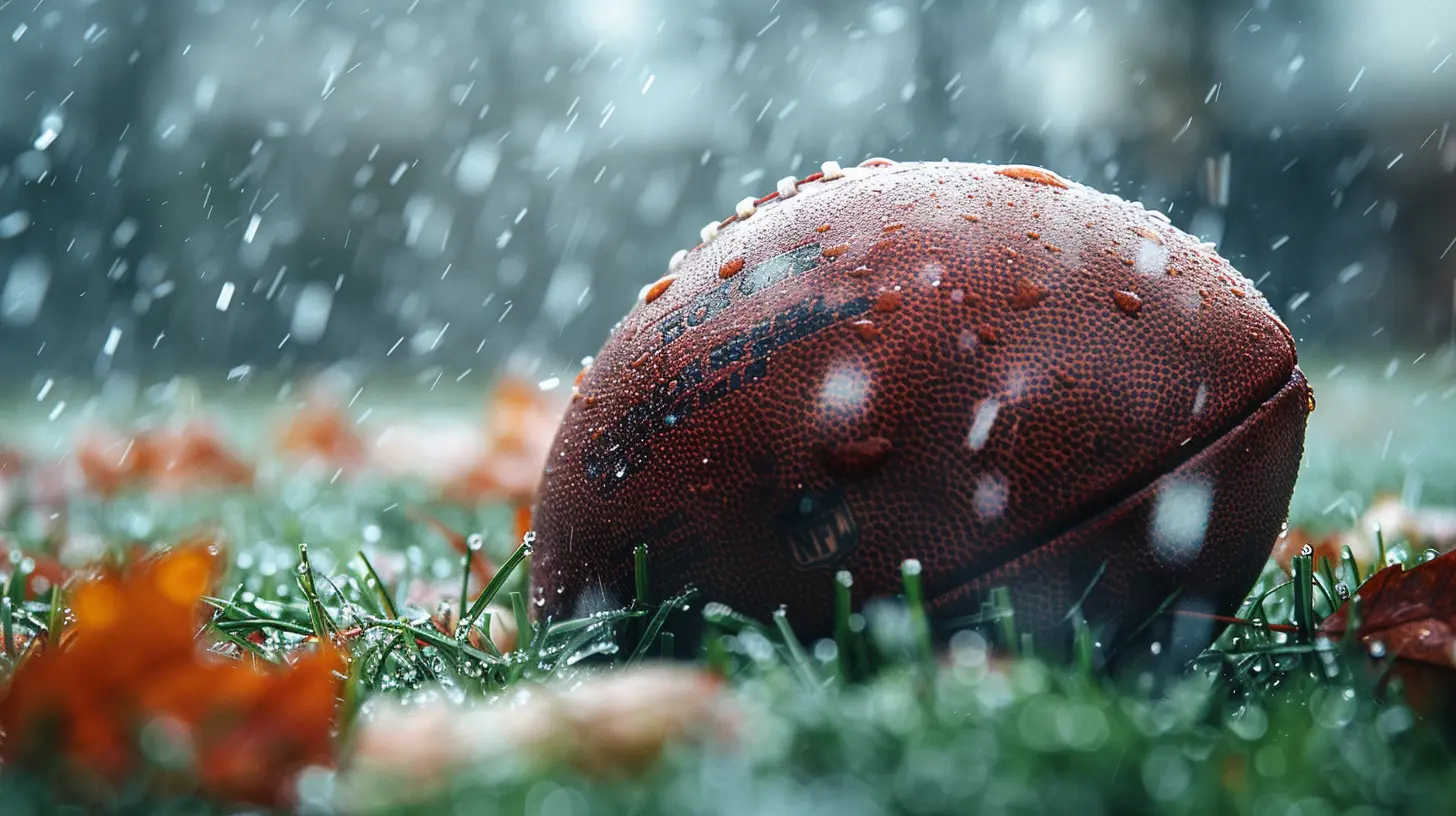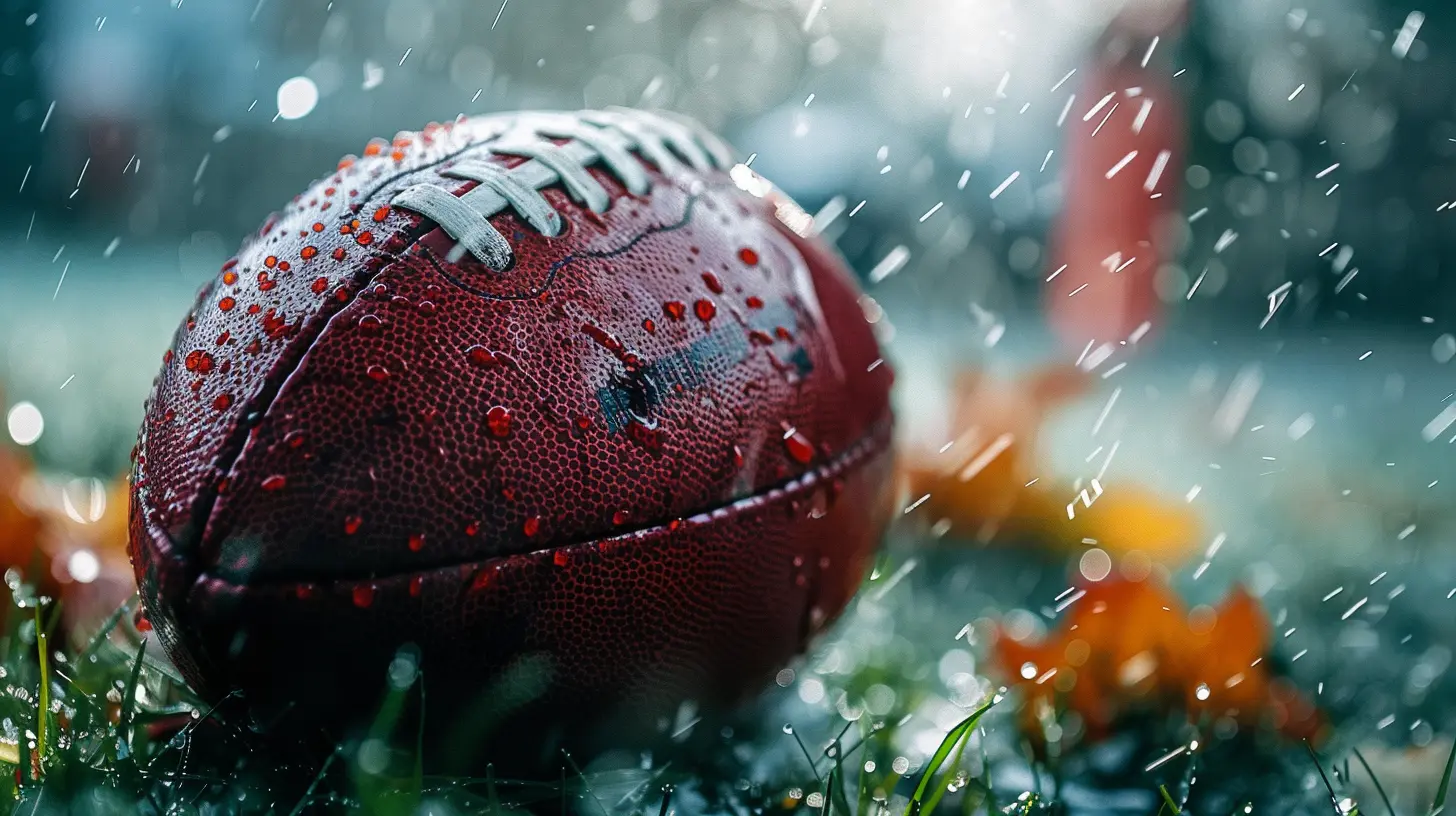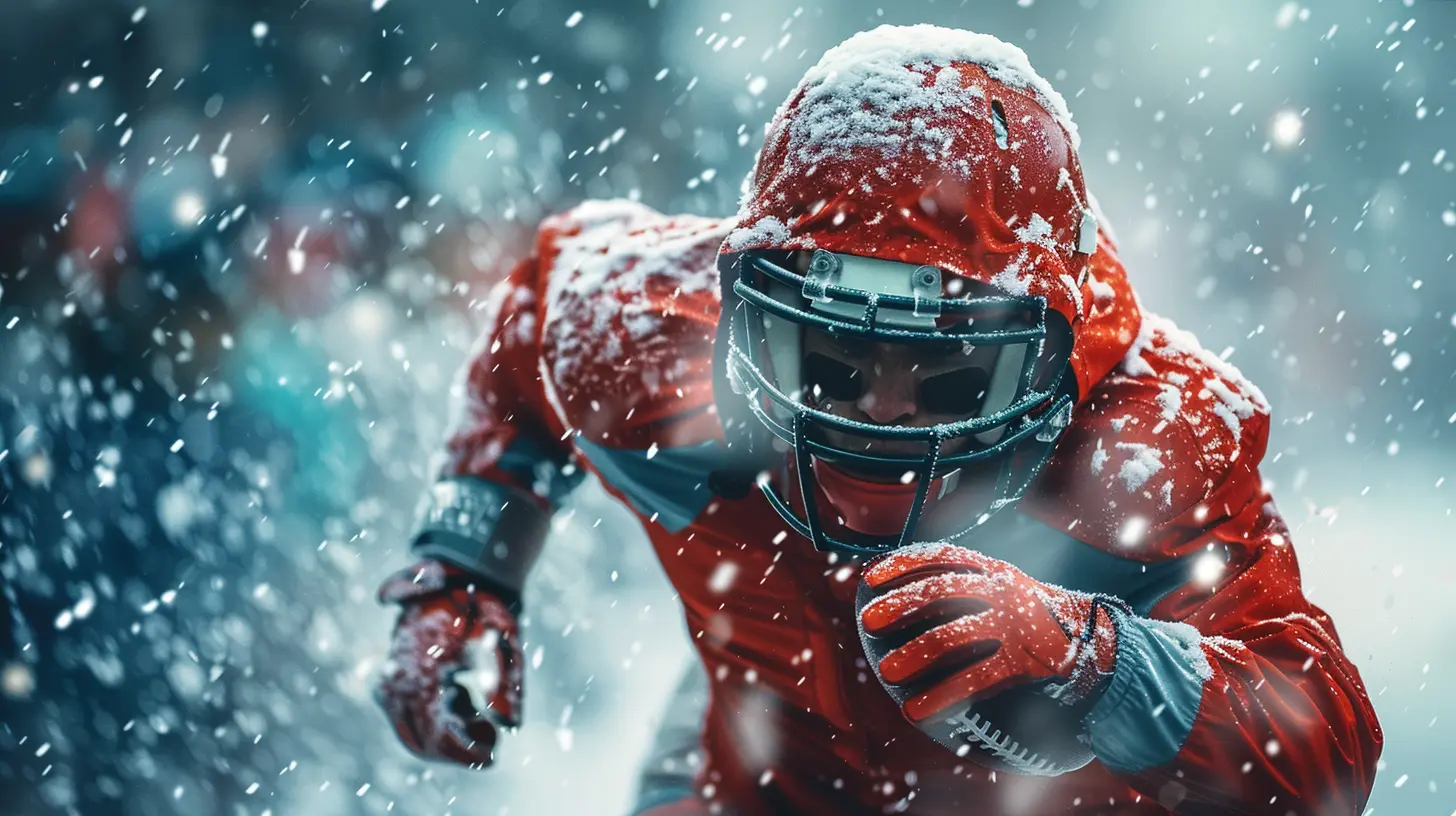How Weather Affects Sports Broadcasts and the Strategies Behind It
6 October 2025
Ever been pumped up to watch a big game—say, the Super Bowl or a high-stakes tennis match—only for the broadcast to get all pixelated, laggy or worse, completely black out? Frustrating, right? Nine times out of ten, you can thank the weather. Weather doesn’t just mess with the players on the field; it throws broadcasters into a frenzy too.
Let’s dive into the not-so-sunny side of sports broadcasting: how weather plays a major role in what you see on your screen and the clever behind-the-scenes strategies that keep your favorite games on-air—even when the skies don’t cooperate.
Why Weather Is a Big Deal in Sports Broadcasting
We all know weather affects playability—no one wants to play soccer during a hailstorm. But broadcasting? That’s a whole separate battlefield.Signal Disruption: The Invisible Enemy
First off, let’s talk signals. Broadcasting a game isn't as simple as pointing a camera and hitting “record.” Satellite signals, microwave links, and wireless transmission are all part of the process—and they're vulnerable to weather.- Rain fade is a real issue. When heavy rain comes down, it can interfere with satellite signals, especially those traveling through the atmosphere at high frequencies like Ka-band.
- Snow and ice can physically damage or block satellite dishes and antennas.
- Strong winds? They can shake satellite dishes enough to throw off alignment and weaken the signal.
Ever streamed a game only to have it buffer endlessly during a thunderstorm? That’s not just bad luck—that’s nature doing its thing.
Equipment Sensitivity
Broadcasting gear isn’t exactly designed for the Himalayas. Think of cameras, cables, production vans—none of these do great in extreme conditions. Moisture can leak into electronic circuits. Freezing temperatures can cause gear to malfunction. Fog can reduce visibility, making it tough to capture good footage.It’s not just about keeping the players dry—broadcasters have to protect millions of dollars in equipment too!
Sports That Get Hit the Hardest
Weather doesn’t impact all sports equally. Some are more exposed, both literally and operationally.Outdoor Sports = Sitting Ducks
From football and baseball to golf and motor racing, outdoor sports take the biggest hit. If there’s lightning nearby, games are delayed or postponed. But for broadcasters, the show must go on—which means scrambling to fill unexpected air time.Let’s not forget:
- Golf tournaments stretch across acres of land. One thunderstorm, and visibility tanks—plus, lightning becomes a serious danger.
- Auto racing events like NASCAR rely on clear, dry roads. Even a light drizzle can cause slippery conditions and mess up camera visibility.
Winter Sports: Beauty Meets Brutality
Snowboarding and skiing events look gorgeous on TV, but filming them is a logistical nightmare. Cameras freeze, drones can't fly properly, and wind affects both athletes and camera stabilization gear.And yet, the show always seems flawless, right? That’s the magic of preparation.
Behind-the-Scenes Strategies That Save the Day
Alright, now let’s get into the meat and potatoes. How do broadcasters keep the game on-air when Mother Nature decides to throw a tantrum?1. Redundant Signal Paths
This is fancy talk for “backup plans.” Broadcasters often have multiple ways to send the signal:- Primary satellite uplinks
- Backup fiber optic lines
- Even mobile uplinks via 5G
If one goes down, another kicks in seamlessly. Think of it like having a spare tire—except for multimillion-dollar live feeds.
2. Weather Monitoring Systems
Big broadcast companies now use real-time weather data and prediction models to stay ahead of the curve. You know those Doppler radars that weather channels use? Sports networks use similar tech to predict when lightning or rain might hit.This allows producers to plan accordingly—maybe bump up pre-recorded segments, cut to studio analysis, or delay non-essential footage.
3. Weatherproof Equipment
No more setting up $100,000 cameras under garden umbrellas. These days, equipment is:- Water-sealed
- Temperature-controlled
- Shock-resistant
Plus, portable enclosures and tents protect onsite reporting crews from the elements.
4. On-the-Fly Production Adjustments
Good broadcasters are nimble. When a storm hits, they can:- Reduce the number of camera angles to the most essential
- Rely more on commentary and studio insights
- Use drone or crane shots when ground visibility is poor
Quick thinking becomes a broadcaster’s secret weapon.
Case Studies: When Weather Took Over the Script
2021 Daytona 500 – Rain Delay
This iconic race was hit with rain so heavy it caused a six-hour delay. Broadcasters had to improvise with interviews, behind-the-scenes footage, and analysis. Interestingly, those segments drew higher engagement than usual, proving that a flexible game plan pays off.Wimbledon’s Weather Woes
Before they installed retractable roofs, Wimbledon was notorious for rain delays. BBC, the primary broadcaster, used these pauses to roll out “rainy day programming”—classic match reruns, in-depth player interviews, and weather updates that were oddly addictive.NFL Cold Games
Remember the "Ice Bowl" or the infamous Packers vs. Seahawks games played in freezing conditions? Cameras froze, drones couldn't fly, and sideline reporters basically became icicles. Broadcasters leaned heavily on booth commentary and in-game graphics to keep fans engaged.Digital Streaming vs. Traditional Broadcasting: Who Handles Weather Better?
Here’s an interesting twist—streaming platforms like ESPN+, DAZN, or Amazon Prime are even more vulnerable to weather disruptions. Why?Their reliance on digital infrastructure—especially cloud servers and internet bandwidth—means they can experience:
- Signal drops in bad weather zones
- Compression lags
- Out-of-sync audio/video due to latency issues
Traditional television, with its multiple uplinks and hardwired redundancies, often holds stronger during extreme conditions.
But streaming platforms are catching up fast by:
- Hosting data across multiple cloud regions
- Leveraging edge computing to reduce delay
- Using AI to automatically adjust video quality in real-time
Broadcasters’ Secret Weapon: Planning for the Worst
It's not all reactive. Big broadcasting teams do a lot of proactive planning.Site Surveys and Risk Assessments
Before any major event, crews visit the venue to:- Study elevation and terrain (to avoid flooding)
- Identify safe zones for equipment
- Map out emergency evacuation routes
They don’t just think like journalists; they think like survivalists.
Dry Runs and Drills
Broadcasters simulate weather events during pre-production tests. They rehearse:- Switching to backup feeds
- Going live from alternate locations
- Deploying weather graphics and updates instantly
In other words, they practice how to pivot—fast.
The Ripple Effect on Advertising and Sponsorship
Let’s not forget the big bucks riding on each game. Weather delays or low-quality broadcasts impact:- Ad placement timing
- Viewer ratings, which determine future ad revenue
- Sponsorship deals tied to guaranteed screen time
So, broadcasters don’t just want to stay on-air; they need to do it well. Each dropped frame is potentially thousands of dollars lost.
To counter this, many networks now offer make-goods—compensatory ad segments or replays to fix what weather disrupted.
The Future: Smarter Tech to Outsmart the Weather
With AI creeping into every corner of our lives, sports broadcasting is no exception. Some exciting advancements on the horizon:- AI-powered signal routing that automatically bypasses affected links
- Predictive weather modeling that integrates directly with production workflows
- Smart cameras that adapt exposure and settings to fog, snow, or rain
And who knows? Maybe in a few years, broadcasters will use immersive VR re-creations when weather makes live footage impossible.
So, What’s the Takeaway?
Weather is that wild card no sports broadcaster can ignore. It rains? They adjust. It snows? They adapt. It lightning-strikes? They pivot. From backup satellites to AI cameras, the amount of prep and ingenuity that goes into broadcasting your favorite game—rain or shine—is nothing short of impressive.So next time you’re watching a soggy football game from your warm living room, spare a thought for the crew behind the scenes—dodging rain, braving the elements, and pulling off broadcasting wizardry just to keep the game alive on your screen.
all images in this post were generated using AI tools
Category:
Sports BroadcastingAuthor:

Frankie Bailey
Discussion
rate this article
1 comments
Ariana Wolf
Weather conditions significantly influence sports broadcasts, affecting everything from production logistics to viewer engagement. Broadcasters must adapt their strategies, incorporating real-time weather updates and dynamic content to keep audiences informed and entertained. A thorough understanding of these elements enhances the overall viewer experience and maintains the integrity of the broadcast.
October 16, 2025 at 10:42 AM

Frankie Bailey
Thank you for your insightful comment! Indeed, adapting to weather conditions is crucial for broadcasters to ensure an engaging viewer experience while maintaining production quality.


